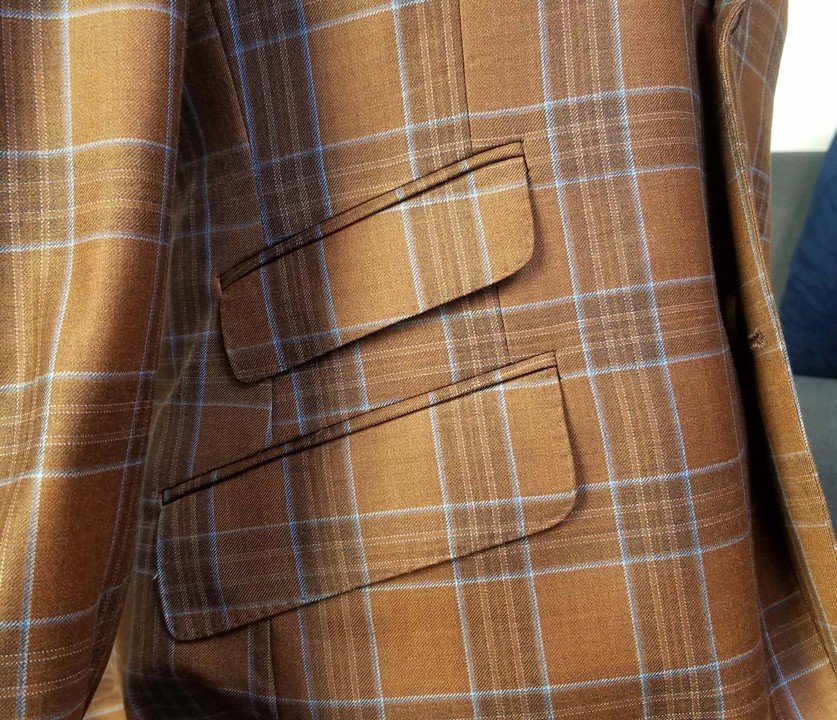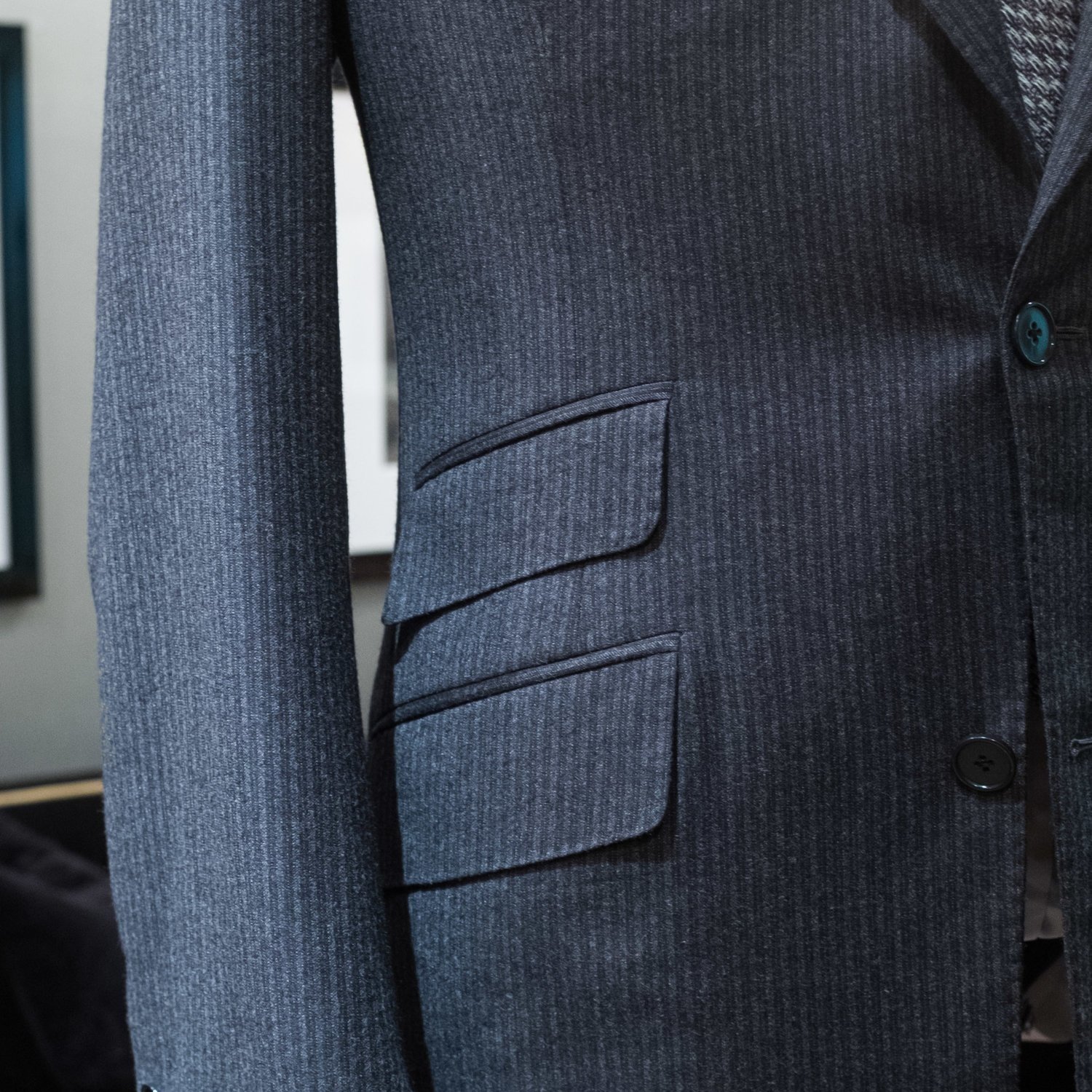What is a ticket pocket?
Here at Rivmont, we're all about the minutiae. Those small details are what make a garment truly special, setting it apart from the rest. Among the many options for customizing a suit jacket, one feature often catches people's attention: the ticket pocket. It's a common question we receive, so let's break it down and find out what a ticket pocket really is.
Traditional suit jackets and sport coats typically feature three exterior pockets on the front: one at the breast, and two lower ones. However, a ticket pocket is a unique addition, serving as a third lower pocket positioned just above the right lower pocket. This distinct feature is rarely found on off-the-rack garments, often signaling a bespoke custom jacket.
Also known as a “cash pocket,” this design element traces its origins back to 19th-century England. During this era, affluent individuals, who predominantly wore bespoke attire, frequently traveled by train to the countryside. Given this context, ticket pockets were particularly practical for sport jackets and country suits rather than formal business attire or tuxedos.
Tailors soon recognized the usefulness of the ticket pocket and began incorporating it into their offerings, providing clients with a convenient place to store tickets or even cash.
Beyond practicality, there's a touch of chivalry associated with the ticket pocket. In the past, it was considered gentlemanly for a man to handle tickets and transactions, not only for himself but also for his companion. The ticket pocket facilitated this courteous gesture, offering an organized way to carry essential items while demonstrating gallantry.
Today, if you find yourself in a similar scenario, offering to hold tickets or similar items for your date remains a gentlemanly gesture. However, it's important to note that insisting on such behavior solely for the sake of chivalry may not be appropriate in modern contexts.
When it comes to incorporating a ticket pocket into a jacket's design, the process follows a fairly straightforward approach. You'll typically discuss the idea with your image consultant, and if both parties agree it complements the garment, it's added. By default, the ticket pocket matches the style of the other lower pockets unless specified otherwise. Straight besom pockets or slanted, flapped pockets will each have a corresponding ticket pocket.
However, the decision to include a ticket pocket in your jacket design involves more than just aesthetics. While these pockets undoubtedly add flair to a garment, they may not be suitable for every occasion. For conservative settings, such as formal business events, opting out of a ticket pocket might be preferable. Conversely, if your style allows for a bit of boldness, adding one can elevate your look.
Consideration should also be given to body type. Tall individuals, in particular, benefit from ticket pockets as they introduce a horizontal line to the overall presentation without adding height to the frame. While this may seem like a minor detail, our attention to such nuances is part of what sets us apart.
It's important to note that tuxedo jackets typically do not feature ticket pockets. Formal attire emphasizes sleekness and minimizing bulk, making the inclusion of ticket pockets less advisable in this context. At Rivmont, we often advise clients to forgo ticket pockets when selecting a tuxedo jacket to maintain a refined, streamlined appearance.
In conclusion for this short blog, a ticket pocket serves as a charming addition to your ensemble, whether you're donning a timeless suit or opting for a more daring plaid sport jacket. Give it a try. Cheers!



